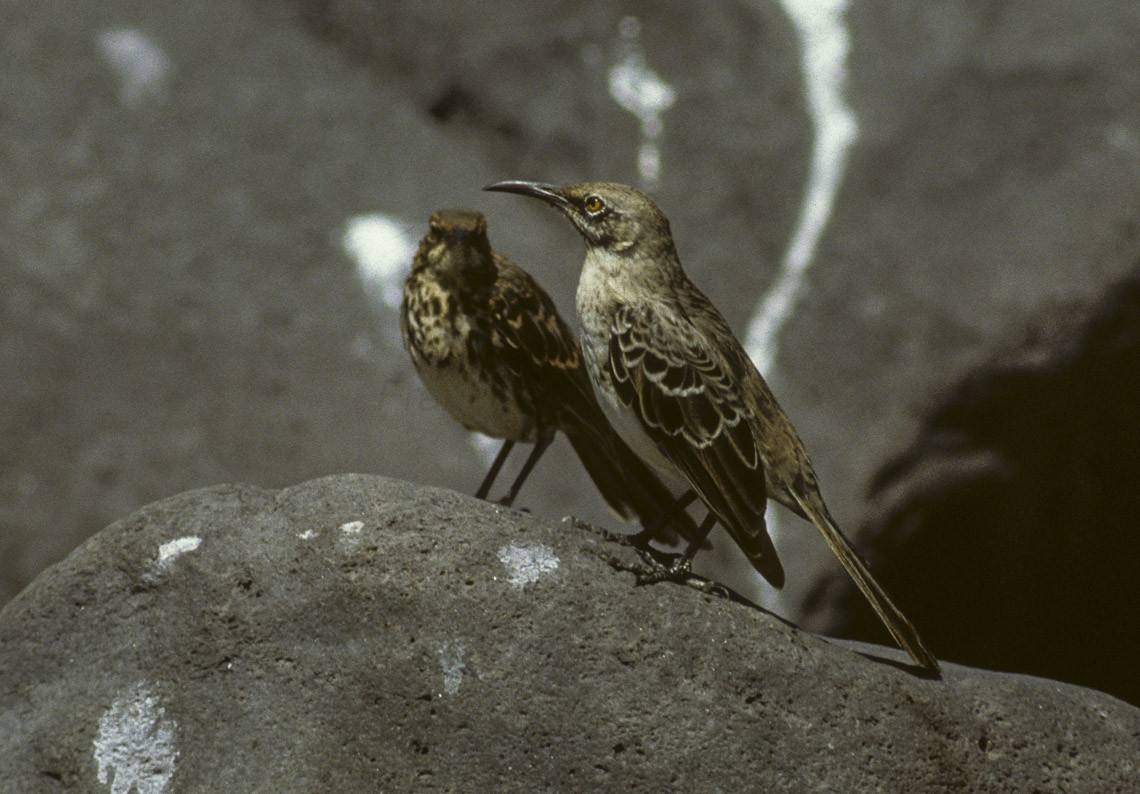Espanola Mockingbird
A species of Typical mockingbirds, Also known as Hood Mockingbird Scientific name : Mimus macdonaldi Genus : Typical mockingbirds
Espanola Mockingbird, A species of Typical mockingbirds
Also known as:
Hood Mockingbird
Botanical name: Mimus macdonaldi
Genus: Typical mockingbirds
Content
Description People often ask General Info
 Photo By Francesco Veronesi , used under CC-BY-SA-2.0 /Cropped and compressed from original
Photo By Francesco Veronesi , used under CC-BY-SA-2.0 /Cropped and compressed from original Description
Similar to the other species of Galápagos mockingbirds, this species has a mottled gray and brown plumage with a white underbelly. A long tail and legs give the bird its distinctive appearance. The species has a long, thin beak, useful for tapping into the eggs of seabirds. The species has the largest bill of any of the Galápagos mockingbirds. The species, along with the other Galápagos mockingbirds, is most closely related to the Bahama mockingbird (Mimus gundlachii), despite the closer geographical proximity of Ecuador's long-tailed mockingbird (Mimus longicaudatus). 
Size
28 cm
Colors
Brown
Black
Gray
White
Nest Placement
Shrub
Feeding Habits
Espanola Mockingbird is omnivorous, mainly scavenging and preying on seabird eggs, carrion, and other predators’ kills. They exhibit unique behavior, feeding on blood from injured seabirds akin to vampire finches.
Habitat
Espanola Mockingbird thrives in subtropical or tropical habitats, specifically within dry forests and dry shrublands characterized by xeric conditions. These birds are native to arid environments, adapting to regions abundant with thorny vegetation, such as mesquite scrub and cacti-studded woodlands. Their ecosystem typically comprises scrubby, shrub-dominated areas, with hardy plant species like Prosopis and Bursera playing a crucial role in providing shelter and food sources.
Dite type
Omnivorous
People often ask
General Info
Feeding Habits
Bird food type
Behavior
The bird is extremely aggressive and curious, and has no fear of humans whatsoever. The bird will chase after tourists in search of food, drink, or any unusual object. In some cases, the species will attempt to obtain water from tourists by pecking at their water bottles. The birds have a strong social structure organized into family groups. Highly territorial, these groups will cooperatively hunt within their area as well as defend it against other groups. Lower-ranking members of the group will assist in caring for the young. 
Species Status
The bird is considered to be vulnerable in the wild by BirdLife International due mainly to its limited area. The fragile ecosystem and high risk of adverse weather conditions put the species at particular risk of population loss. It is estimated that there are fewer than 2,500 left in the wild. 
Scientific Classification
Phylum
Chordates Class
Birds Order
Perching birds Family
Mimids Genus
Typical mockingbirds Species
Espanola Mockingbird